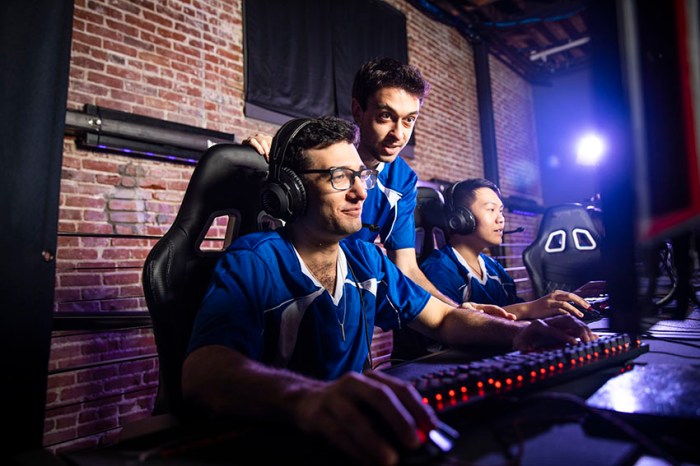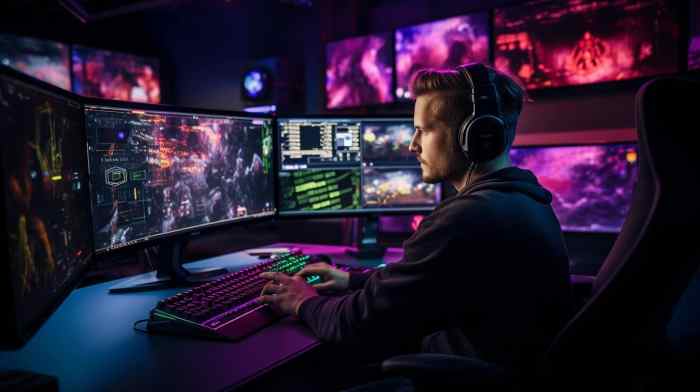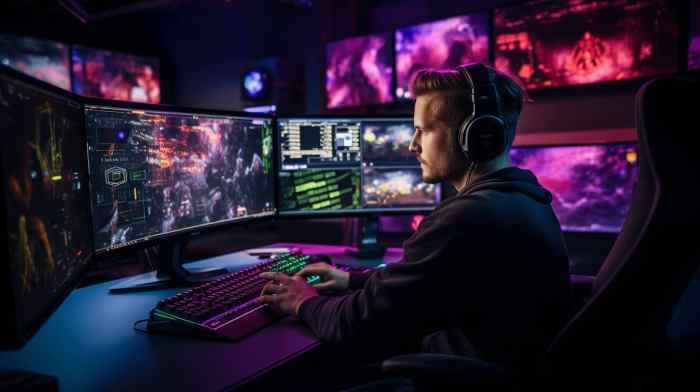Esports coaching tips are key to dominating the competitive scene. Whether you’re coaching a pro team or just helping your buddies climb the ranks, understanding the nuances of different esports, player psychology, and strategic analysis is crucial. This guide dives into the strategies and techniques needed to become a top-tier esports coach, covering everything from in-game tactics to team management and player development.
We’ll explore the unique challenges of coaching various esports genres, from the strategic depth of MOBAs to the rapid reflexes required in FPS games. We’ll also delve into the importance of fostering a positive team environment, providing constructive feedback, and utilizing technology to enhance performance. Get ready to learn how to build winning teams and help players reach their full potential!
Game-Specific Strategies and Tactics: Esports Coaching Tips

Let’s dive into the nitty-gritty of developing winning strategies and tactics in competitive gaming. Understanding the nuances of your chosen game, whether it’s a fast-paced FPS or a strategic MOBA, is crucial for climbing the ranks. We’ll focus on
League of Legends* (LoL) as our example, exploring map awareness, objective control, and team composition strategies.
LoL, a popular MOBA, demands a high level of strategic thinking and mechanical skill. Success hinges on effective teamwork, map awareness, and smart decision-making under pressure. This section will explore how to leverage these elements to gain a competitive edge.
Map Awareness in League of Legends
Effective map awareness in League of Legends is about constantly monitoring the mini-map, predicting enemy movements, and using that information to your advantage. It’s not just about knowing where enemies
- are*, but also anticipating where they
- might* be based on their last known location, the game timer, and the overall game state. This allows you to make informed decisions about rotations, ganks, and objective control. For example, if you see the enemy jungler missing from their lane for an extended period, it’s a strong indication they might be attempting a gank or taking an objective, prompting your team to adjust accordingly.
Ignoring the minimap is like playing blindfolded – you’re severely limiting your potential and increasing the risk of being caught off guard.
Mechanical Skill Training Regimen for League of Legends
Improving mechanical skills in LoL requires dedicated practice. A structured training regimen should focus on improving key mechanics like last-hitting minions (CS), efficient wave management, and precise ability usage.
A sample training regimen might include:
- 30 minutes of practice tool: Focus exclusively on last-hitting minions. Aim for a high CS per minute (CPM) target, gradually increasing the difficulty by incorporating enemy harass or using different champions.
- 30 minutes of custom games: Practice wave manipulation against AI opponents. Learn to freeze, slow push, and crash waves to control lane pressure and create opportunities for ganks or dives.
- 30 minutes of normal games: Apply your improved mechanics in a real-game setting. Pay attention to your CS, ability accuracy, and overall performance. Focus on one or two key mechanical aspects to improve in each session.
Consistent practice and focused effort are key to mastering these mechanics.
Successful Tactical Plays and Analysis
One successful tactic in LoL is the “split push”. This involves one player pushing a side lane aggressively while the rest of the team focuses on securing objectives or team fights elsewhere. The effectiveness of a split push relies on the ability of the solo player to draw enemy attention and create pressure while their team gains an advantage elsewhere on the map.
This forces the enemy team to choose between defending the push or contesting objectives, creating numerical advantages for your team. A successful split push often leads to tower dives, inhibitor destruction, and eventually, victory. The key to success lies in good map awareness, quick decision-making, and effective communication with the team. Conversely, a poorly executed split push can leave the solo player vulnerable and result in unnecessary deaths.
Adapting Strategies Based on Opponent Analysis and In-Game Situations, Esports coaching tips
Successful teams constantly adapt their strategies based on opponent analysis and in-game situations. Pre-game analysis of the enemy team’s composition, playstyle, and recent performance can inform your draft and in-game decisions. For example, if the enemy team has a strong engage composition, your team might prioritize champions with strong escape mechanisms or crowd control to counter their aggressive plays.
During the game, reacting to unexpected events and adapting your strategy is critical. If your team is falling behind, you might focus on playing defensively and securing objectives to prevent a snowball effect. If you’re ahead, you might look for opportunities to take risks and close out the game. Flexibility and adaptability are crucial skills for any competitive player.
Team Management and Communication

Effective communication and a strong team dynamic are the cornerstones of success in esports. A cohesive unit, working together seamlessly, significantly increases the chances of victory, regardless of individual skill levels. Without these crucial elements, even the most talented players can struggle to reach their full potential.Clear and concise communication is paramount for coordinating strategies, making quick decisions under pressure, and adapting to changing game situations.
Miscommunication can lead to costly errors, lost objectives, and ultimately, defeat. A positive and collaborative environment fosters trust, encourages open feedback, and promotes a sense of shared responsibility, leading to better performance and improved morale.
Positive Team Environment Fostering
Creating a positive and collaborative team environment requires active effort and consistent reinforcement. This involves establishing clear roles and responsibilities, ensuring every member feels valued and heard, and promoting open communication channels. Regular team meetings, both in-game and out, provide opportunities for feedback, strategy discussions, and relationship building. Encouraging players to share their thoughts and concerns freely, while respecting differing opinions, creates a safe space for collaboration and innovation.
Celebrating successes, both big and small, strengthens team bonds and motivates continued effort. Addressing conflicts constructively, rather than allowing them to fester, is vital for maintaining a healthy team dynamic.
Conflict Resolution and Interpersonal Dynamics Management
Conflict is inevitable within any team, but its management is key. Establish a clear process for addressing disagreements, emphasizing respectful communication and active listening. Mediation by a neutral party (coach or team captain) can be helpful in resolving disputes fairly. Focusing on the issue at hand, rather than resorting to personal attacks, is crucial. Encourage players to express their perspectives without interrupting each other, and to actively seek common ground.
After a conflict is resolved, emphasize the importance of moving forward as a team, reinforcing the shared goals and the value of each member’s contribution.
Player Performance Tracking and Improvement Identification
A robust system for tracking player performance is essential for identifying areas for improvement and maximizing individual and team potential. This involves collecting data on various metrics relevant to the game, analyzing the data to pinpoint strengths and weaknesses, and developing personalized improvement plans. Regular feedback sessions, incorporating both quantitative data and qualitative observations, help players understand their performance and work towards improvement.
| Player Name | Skill Area | Performance Metric | Improvement Plan |
|---|---|---|---|
| John | Aim | Accuracy: 60% | Focus on aim drills, review replays for missed shots. |
| Jane | Decision Making | Average objective time: 15 seconds slower than team average | Review strategic decision-making guides, practice situational awareness. |
| Mike | Teamwork | Communication score: 7/10 | Active participation in team discussions, improved callouts. |
| Sarah | Map Awareness | Average deaths due to flanking: 3 per game | Practice map awareness drills, improve minimap usage. |
General Inquiries
What software is best for analyzing game replays?
There are many options depending on the game, but many programs offer replay recording and analysis features. Look for software that provides tools for tracking player stats, visualizing key moments, and exporting data for further analysis.
How do I handle a player with a negative attitude?
Address the issue directly in a private setting. Focus on their performance, not their personality. Use positive reinforcement to encourage improvement and highlight their strengths. If the behavior persists, consider involving team management.
How much time should I dedicate to coaching?
It depends on the team’s level and your goals. Professional teams require significant time commitment, while casual teams might only need a few hours a week. Prioritize consistency over quantity.
What’s the best way to recruit players?
Utilize online communities, tournaments, and social media to find talented players. Look for players with a good attitude, strong skills, and a commitment to teamwork.
